#Lincoln center for the performing arts
Explore tagged Tumblr posts
Text

Alexander Calder, Le Guichet, Lincoln Center for the Performing Arts, New York, New York, 1963
#art#design#sculpture#public art#Alexander Calder#Lincoln center for the performing arts#New York#New York City#Le Guichet
313 notes
·
View notes
Text










The Lincoln Center for the Performing Arts opened in New York City on September 23, 1962.
#Lincoln Center for the Performing Arts#opened#travel#original photography#vacation#tourist attraction#landmark#architecture#cityscape#23 September 1962#US history#anniversary#Midtown Manhattan#New York City#David H. Koch Theater#10 Lincoln Center Plaza#Metropolitan Opera House#David Geffen Hall#Revson Fountain#Paul Milstein Pool and Terrace#Barclays Capital Grove#Damrosch Park#Hearst Plaza#summer 2013#exterior#USA
34 notes
·
View notes
Text
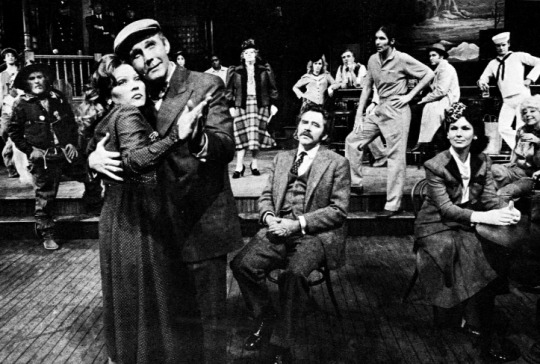
William Saroyan’s The Time of Your Life with (left to right) Susan Tyrrell, Biff McGuire, (sitting) #JamesBroderick, Priscilla Pointer, (background, on steps) Robert Symonds, and Leonard Frey.
Lincoln Center for the Performing Arts, 1969.
#susan tyrrell#william saroyan#The Time of Your Life#Biff McGuire#James Broderick#Priscilla Pointer#Robert Symonds#Leonard Frey#Lincoln Center for the Performing Arts#1969#stage#play
5 notes
·
View notes
Text
Devon Teuscher and Aran Bell

Devon Teuscher as “Juliet Capulet” and Aran Bell as “Romeo Montague”, “Sleeping Beauty”, choreo by Aleksey Ratmansky Алексей Ратманский, music by Pyotr Tchaikovsky Пётр Чайковский, scenery and costume by Richard Hudson, American Ballet Theatre, Metropolitan Opera House, Lincoln Center for the Performing Arts, New York City, USA.
Note I: This blog is open to receiving and considering any suggestions, contributions, and/or criticisms that may help correct mistakes or improve its content. Comments are available to any visitor.
Note II: Original quality of photographs might be affected by compression algorithm of the website where they are hosted.
Source and more info at: American Ballet Theatre Website American Ballet Theatre on TikTok American Ballet Theatre on Twitter American Ballet Theatre on You Tube American Ballet Theatre on Facebook American Ballet Theatre on Instagram
Photographer Emma Zordan Website Photographer Emma Zordan on Threads Photographer Emma Zordan on You Tube Photographer Emma Zordan on Facebook (personal) Photographer Emma Zordan on Instagram
#Aleksey Ratmansky Алексей Ратманский#American Ballet Theatre#Aran Bell#Devon Teuscher#Emma Zordan#Juliet Capulet#Lincoln Center for the Performing Arts#Metropolitan Opera House#Pyotr Tchaikovsky Пётр Чайковский#Richard Hudson#Romeo Montague#The Sleeping Beauty#Dans#Danse#Dance#Danza#Dancer#Dansen#Balet#Ballet#Балет#Ballett#Balletto#Balerino#Balerina#Ballerina#Ballerino#Bailarina#Балерина#Танец
0 notes
Text
Theresa Rebeck, Presented by League of Professional Theatre Women at NYPL for the Performing Arts at Lincoln Center
Theresa Rebeck shared her wisdom at the LPTW Oral History Project event. She is collaborating on the musical 'Working Girl' with Cyndi Lauper.
Theresa Rebeck with a twinkle in her eye, at the LPTW Oral History Project Event (Carole Di Tosti) Theresa Rebeck. If the name doesn’t sound immediately familiar, chances are you do know Theresa Rebeck’s work from Broadway, off-Broadway, television, films or literature. A prolific writer, she is the most produced female playwright of her generation. Her work is presented throughout the United…

View On WordPress
#Dig#League of Professional Theatre Women#Lincoln Center#LPTW Oral History Project#Ludovica Villar-Hauser#Robyn Goodman#The New York Public Library for the Performing Arts at Lincoln Center#Theresa Rebeck#Working Girl
0 notes
Text
Day Out in New York: Top 5 City Attractions

New York stands out amongst the most progressive cities in the world. Whether it is economic development or infrastructural growth, New York consistently ranks among the top metropolises globally. It is also one of the most cherished cities for tourism as it enthralls visitors with great architectural marvels. With its vibrant nightlife, trendy restaurants, historic sights, and an array of tourist attractions, New York City offers a unique and unforgettable experience for tourists. If you are planning a trip to this famous metropolis, here are the top 5 New York USA tourist attractions worth exploring.
Madame Tussauds New York
The world-famous Madame Tussauds is a worth-exploring museum in New York. Though Madame Tussaud's legacy endures through several museums globally, its Times Square franchise in New York boasts a unique presence. Visitors can explore fascinating and lifelike wax statues of leading celebrities, politicians, and eminent figures. These impeccably designed wax figures look so real that you might feel tempted to carry your favorite one home. You can delight in getting yourself clicked with these remarkable figures at the museum.
Statue of Liberty
One of the most remarkable architectural wonders, esteemed as the most glorious sights in America is the Statue of Liberty. Since 1886, the Statue of Liberty has been captivating visitors with its innovative design and powerful message of freedom. To enjoy a close-up view of the Statue, the best way is to dock on the shores of Liberty Island.
Helicopter Tours
Helicopter tours offer panoramic views of New York City. This is one of the most thrilling and highly recommended tours that one must experience.
As you ascend to higher altitudes, you are treated to breathtaking skyline views that rival the city’s towering buildings.
Broadway Shows
Is it even worth exploring the city, if you don’t catch a show on Broadway? One of the most recommended things to do in New York is to enjoy a live show on Broadway. From classic dramas to heart-wrenching tragedies and laughter-evoking comedies, Broadway caters to the tastes and preferences of every spectator.
Lincoln Center for the Performing Arts New York
While catching a Broadway show is highly recommended, so is savoring the live entertainment and theatrical performances at Lincoln Center for the Performing Arts. Book your tickets, grab a seat, and get ready for some of the most remarkable performances by talented artists. This iconic and state-of-the-art theatre stages 400 shows annually. Some of the best shows that you can enjoy here include American Songbook, Midsummer Night Swing, the Mostly Mozart Festival, and Great Performers.
Author Name Tanya Gandhi
0 notes
Text
There's so many horrible things happening in America right now that it has been interesting to see what individual horrors hurt me personally the most. I grew up going to the Kennedy Center for the Performing Arts. Musicals, plays, concerts, that weird bust of JFK, playing around on terrace during intermissions, putting on a velvet dress that you're going to ruin dropping a milk dud in your lap and not noticing until it's fully melted, wearing the pinchy shiny shoes that are the training bras of women's formal footwear, operas I didn't like but did love, jazz I didn't understand but still fascinated me, red carpet, big stairs, the absolute nightmare amount of experiences I had as a new driver as I repeatedly got trapped in the Kennedy Center's fucking private DC island or whatever the hell is going on traffic-wise, free performances on small side stages, getting to see an enormous production on the Center's most enormous stage, all of which was accessed by walking through that a long, tall hallway lined with flags of the world that made you feel like a dignitary attending the most important even in the world.
And now Trump's taken it over. He fired its board. He appointed one of his loyalists to run it. I want to throw up.
Sometimes I miss DC so much. I love the Pacific Northwest and expect I'll live here for the rest of my life, but this isn't my hometown. I grew up the edge of the District. I've lost cumulative years of my life stuck in traffic on the inner loop and outer loop. Because of the Smithsonian, it used to be so baffling to me that anyone ever had to pay to get into a museum. I've used the Washington DC zoo as a shortcut to a different part of the city because it's free to enter. You couldn't count the amount of knockoff Spider-man popsicles that I've eaten sitting on the steps of the Lincoln Memorial. My reading tastes were molded by Kramer Books in Dupont Circle. I spent afternoons walking around the National Mall, normally just a big empty field until there's an event--book fair, country music program, international cuisine, whatever--at which point for a day or a weekend or a week it becomes a sea of tents and stages. I went to protests outside the Capital and the White House about the war in Iraq. I froze my toes off watching Obama's 2008 presidential inauguration.
It seemed like everyone's family touched the federal government in some way. Everyone's family had moved here because they were military or state department or a political consultant or worked with an NGO or some other reason that meant you had to be here, in the nation's capital. Plenty of people had connections to the federal government that we more hush-hush. Like kids in class straight up going, "I have no idea what my parents do for a living. They're not allowed to tell me." High schoolers regularly, accidentally drove into the CIA parking lot and got escorted out because the premises were that accessible. My family moved here because my dad is a reporter who ended up covering international trade. (Imagine how much his job sucks right now.) He switched beats one summer to cover the White House instead. He got to fly on Air Force One. He got official Air Force One M&Ms. I was SO disappointment my dad didn't work there for Bush to call on him by nickname.
Every day my family got The Washington Post. I read the comics and the kid's page, then the rest of the Style section, then Metro, then news. I learned to read from it. We wrapped our delicate Christmas ornaments with its pages. We used yesterday's papers to clean our windows because they didn't leave streaks. I took journalism in high school. You can't IMAGINE how much and how frequently we talked about Watergate. When Post changed its motto to "Democracy Dies in Darkness" after Trump's election in 2016 that meant something to me. I knew Bezos owned the paper now, but that was still my paper, and the motto spoke to something I fervently believed: if people just knew what was happening, they wouldn't allow it to happen. If you expose a problem, people will naturally agree that it is a problem and that we should do something to fix it. Flash forward to Trump's third fucking campaign, and the newspaper wouldn't endorse a presidential candidate. Chickenshit cowardice. Then they change the motto. "Riveting Storytelling for All of America." Eat shit. You're nothing now.
Politics in America is just telling everyone how much you hate Washington, DC so that they'll elect you so you can move to DC. Well, guys, the city fucking hates you too. Republicans will never give the District actually meaningful political representation because no one in that city would vote for them. It's not just the policies; it's the contempt. No one in the new administration loves the city they schemed and lied and stooped to take over. It's just iconography to them, and all they care about is taking that iconography for themselves. Trump doesn't give a shit about the summer program for the Kennedy Center. He has never seen a show at the Kennedy Center. When he was president, he never attended the annual awards. He's trying to destroy one of the most significant places of my life and I'm genuinely unsure if he has ever stepped for inside of it.
#b.#i need a us politics tag for people to block#us politics#i saw someone use 'politics!' and i was like oh cool i'll do that for easy blacklisting and archiving my thoughts for myself#but i simply cannot bring myself to express any kind of enthusiasm for the topic even for organizational reasons#maybe i'll do like:#politics...
410 notes
·
View notes
Text
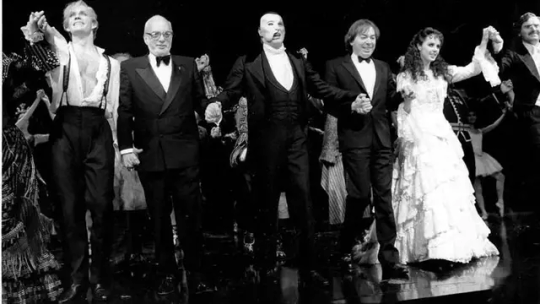
So you want to see the 1988 Phantom of the Opera proshot at the New York Public Library...
If you know one thing about me on this internet it's that I love when things are spelled out and easy. This weekend my friends and I went to the New York Public Library (NYPL) Theatre on Film and Tape Archive (TOFT) located at Lincoln Center to watch the Phantom of the Opera proshot. I saw some how-tos and asked friends who have already seen it, but it was still a little confusing and I wanted to clarify how my experience went:
Bottom line: if you can make your way to NYC, you too can see the Phantom proshot from 1988 starring Michael Crawford, Sarah Brightman, and Steve Barton and lose your mind :)
Here's how I did it:
I showed up to the New York Public Library Library of the Performing Arts located at Lincoln Center with my two (2) also phanatical friends. We were vibrating. We went when the archive opened at noon. Hours can be found here.
We were directed to the third floor where the archive is. We had to check our bags (but were able to bring whatever in - I brought my phone, a pen, and a notebook for notes)
We met the sweetest librarian who was so helpful - he got us on computers to apply for NYPL library cards AND special collections cards. If you live in NY, you can get a regular NYPL card. If you are from out of town, they will give you a NYPL visitor card (good for 3 months!) We filled out applications you can find here and here if you are curious about the questions asked. Many questions are optional! Note: there was some scuttlebutt about needing to be a student or researcher or even an expert in the field - you don't need to say why you're there unless you want to! I kept it brief: said I was an independent researcher and there for personal interest. They are just happy people are using our libraries! Sign the letter here to stop the mayor from closing our libraries
Once we had our cards (NYPL Card AND a special collections card/number) we were told to head to the archive, where we met a second, lovely librarian who was excited we were there. You can ask for any show that isn't currently running (sorry Hadestown nation). You can find a list of what they have here. All titles available at TOFT begin with the call number NCOV, NCOX, or NCOW. Note: we did not make an appt ahead of time, and luckily no one was watching Phantom but our friend wanted to watch Great Comet and someone already had it. To avoid this, make an appt. To make an appointment, call (212) 870-1642 or email [email protected].
We signed off to use the archive and were off to the races! That's it! We were put on three monitors and I controlled the pausing and replaying of the tapes. You can replay as much as you want, and can even ask for other plays/musicals that you want to watch during your session there. I took notes in a notebook, I saw other people taking notes on their phone. There are cameras to make sure you aren't doing any recording or photo taking. Note that you can only see this proshot once without special permission, so if you want to come back you'll need to look into what that permission is.
If you're interested in what was actually IN the beautiful, spectacular, amazing, never before been done proshot (it's from May 25, 1988 by the way) listen to my/our podcast, Leroux Less Travelled!
My inbox is open if you have more questions! I hope this clarifies how easy it is if you're ever in NYC!! We will get through phantom-drought together :)
222 notes
·
View notes
Text

Custom 1953 Muntz Jet Convertible
This 1953 Muntz Jet convertible underwent a three-year custom build under previous ownership, and it was purchased by the seller in 2021. The car is powered by a fuel-injected 5.7-liter LT1 V8 engine paired with a four-speed automatic transmission and a Ford 9″ rear end, and it is finished in Apple Pearl with a white Carson-style removable top over gray snakeskin-style Naugahyde upholstery. Features include custom bodywork, an Art Morrison frame, power-assisted steering, four-wheel disc brakes, airbag suspension, Painless Performance wiring, and more modified and fabricated details. This custom-built Muntz is now offered with a copy of Rodder’s Journal magazine featuring a story on the build and a clean California title in the name of the seller’s business.
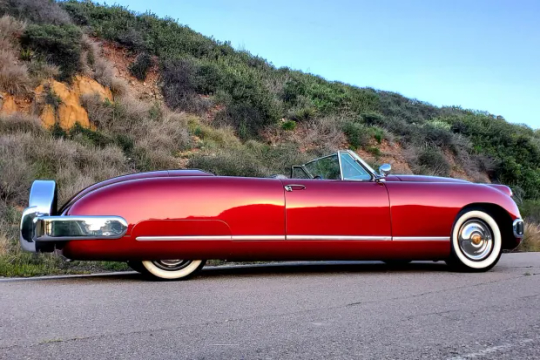
Custom 1953 Muntz Jet Convertible
The steel, aluminum, and fiberglass body is mounted on an Art Morrison ladder frame that was boxed and finished in semi-gloss black, and the floor was raised 3″. The exterior was repainted in a Sherwin Williams two-stage Apple Pearl mixed by the late Stan Betz. Features include a chopped Duvall-style windshield, 1950 Chevrolet headlights, dual Appleton spotlights, 1951 Ford Victoria side windows, and a white removable Carson-style top fabricated to match the height of the chopped windshield. Additional equipment includes color-matched rear fender skirts and chrome bumpers. Wear from fitting the top is noted on the rear deck.

Custom 1953 Muntz Jet Convertible
Steel wheels sourced from a 1976 Dodge measure 15″ and are mounted with Cadillac Sombrero-style covers and whitewall tires. A matching spare fitted with a BFGoodrich Silvertown tire is mounted within a rear-mounted Continental-style chrome carrier. A Mustang II front end accommodates power rack-and-pinion steering , and the car rides on an electronically-adjustable Air Ride Technologies airbag suspension system along with 2” lowered front spindles, Strange Engineering tube shocks, a rear Panhard bar, and front and rear sway bars. The seller reports that the front control arm bushings were recently replaced.

Custom 1953 Muntz Jet Convertible

Custom 1953 Muntz Jet Convertible
Braking is handled by GM G-body-sourced calipers matched with Ford Granada discs up front and Ford SVO-specification calipers and discs at the rear.
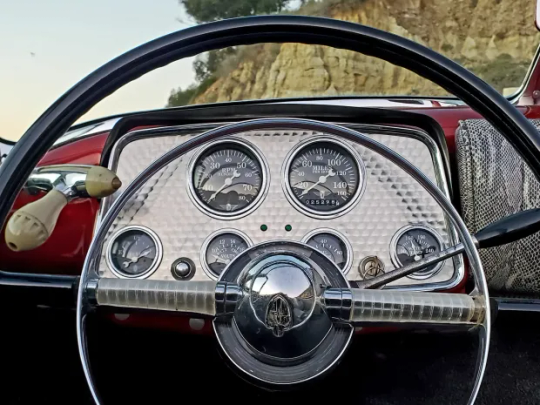
Custom 1953 Muntz Jet Convertible
The cabin was customized by Jim’s Auto Trim of San Diego, California, and features Glide bucket seats and a rear bench trimmed in gray snakeskin-style Naugahyde upholstery, along with matching treatments for the dash trim, headliner, and door panels. Additional equipment includes a 1952 Lincoln steering wheel mounted to a shortened Lincoln steering column, gray cut-pile carpet, and a Pioneer stereo housed within a custom center cubby.
The engine-turned “Hollywood” instrument cluster houses Stewart Warner gauges consisting of an 8k-rpm tachometer, a 160-mph speedometer, and auxiliary readings for fuel level, battery charge, oil pressure, and water temperature. The five-digit odometer displays 25k miles, though total chassis mileage is unknown. A Lokar pedal assembly was fitted during the build.

Custom 1953 Muntz Jet Convertible
The Corvette-sourced 5.7-liter LT1 V8 features a polished fuel intake manifold along with billet aluminum valve covers, and additional features include an Opti-Spark distributor, a Griffin aluminum radiator, and a wiring loom sourced from Painless Performance Wiring. A set of long-tube headers are connected to a 2.5″ exhaust system equipped with dual Dynaflow mufflers. The seller reports that the oil was recently changed.

Custom 1953 Muntz Jet Convertible
Power is routed to the rear wheels via a four-speed 4L60E automatic transmission and a Ford 9″ rear end with with 3.55:1 gears and Strange Engineering 31-spline axles. Additional photos of the underside, drivetrain, and suspension components are presented in the gallery below.
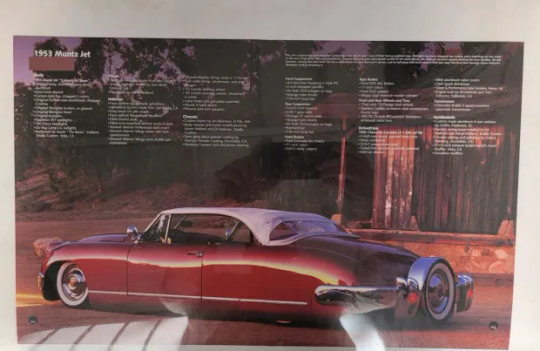
Custom 1953 Muntz Jet Convertible
The car was featured in issue #36 of Rodders Journal magazine
#Custom 1953 Muntz Jet Convertible#Custom 1953 Muntz Jet#Muntz Jet Convertible#Custom Muntz Jet Convertible#Muntz Jet#Convertible#car#cars#muscle car#american muscle
110 notes
·
View notes
Text
2024 Year In Review
2024 was another intense year. It was the first time in twenty years I wasn’t scoring a show for TV, and I got to concentrate on finishing albums and starting new projects. The year began with the premiere of my chamber symphony for Alterity Chamber Orchestra in Orlando and ended with guest-vocalizing with the Losers Lounge Band on a Bowie classic at Joe's Pub in NYC. I completed new albums for Xordox and Venture Bros, to be released in 2025. I released an Archer Soundtrack album and scored a Harry Smith film for L’Etrange Festival in Paris. Worked with Laura Wolf on a new project and premiered my Ensemble project at the Big Ears Festival in Tennessee. Recorded many overdubs for the next Foetus album, also to be released in 2025. Began a new series of sculptural wall pieces. We lost Phill Niblock in January and Steve Albini in May. We lost my colleague Roli Mosimann in September. I still woke up 5am in a panic on too many occasions. As a cultural omnivore, many sights, sounds and stimuli penetrated me.
Albums that I enjoyed in 2024
Sleepytime Gorilla Museum of the Last Human Being (Pelagic) Present This is not the end (Cuneiform) Tristan Perich/Ensemble 0 Open Symmetry (Erased Tapes) Drew McDowall A Thread Silvered and Trembling (Dais) Warrington-Runcorn New Town Development Plan Your Community Hub (Castles In Space) Extra Life The Sacred Vowel (Bandcamp) Geordie Greep The New Sound (Rough Trade) D-en Haut D-en Haut (Pagan) Aksumi Fleeting Future + Lines (Tonal Union) Louis Cole Nothing (Brainfeeder) Uniform American Standard (Sacred Bones) Zeal and Ardor Greif (Redacted) Shellac To All Trains (Touch and Go) Bangladeafy Vulture (Nefarious Industries) Ekko Astral Pink Balloons (Topshelf Records) Kee Avil Spine (Constellation) Fennesz Mosaic (Touch) Marewren Ukouk Round singing Voices of the Ainu 2012-2024 (Pingipung) Elysian Fields What The Thunder Said (Ojet) Melvins Tarantula Heart (Ipecac) Blood Incantation Absolute Elsewhere (Century Media) Aoife O’Donovan All My Friends (Yep Roc) Anna Thorvaldsdottir Aerial (Sono Luminus) Grace Bergere A Little Blood (Casa Gogol) Bob Vylan Humble As The Sun (Ghost Theatre 2) Andy Akiho Kin (Aki Rhythm) Yannis Kyriakides Hypnokaseta (Unsounds) Big | Brave A Chaos of Flowers (Thrill Jockey) The The Ensoulment (Cinéola / earMUSIC) Beth Gibbons Lives Outgrown (Domino) Beak >>>> / Kosmik Musik (Invada) Sebastian Tropic OST (Ed Banger) Chaser Planned Obsolescence (Decoherence Records) Jesus Lizard Rack (Ipecac) Ex East Islander Norther (Rocket Recordings)
Some books I enjoyed
Yuval Noah Harari Nexus Chris Stein Under A Rock Bill Buford Among The Thugs Patricia Highsmith The Talented Mr Ripley Sy Montgomery Soul Of An Octopus Malcolm Gladwell Revenge Of The Tipping Point
Some films I enjoyed
Furiosa ZEF Story Of Die Antwoord Joker Folie A Deux Kneecap Bad Faith Rebel Ridge Hundreds Of Beavers Ministry Of Ungentlemanly Behavior Teachers Lounge
I saw hundreds of concerts in 2024. Some highlights:
01.24.24 The Chisel at Bowery Ballroom 02.15.24 Jack Quartet play Austin Wulliman at Roulette Intermedium NYC. 03.09.24 Louis Cole / Genevieve Artadi at Brooklyn Steel 03.14.24 Kate NV at the Atrium at Lincoln Center 03.18.24 Sleepytime Gorilla Museum at Elsewhere in Brooklyn 03.23.24 Secret Chiefs 3 at Big Ears Festival 03.23.24 Hatis Noit at St John’s Cathedral in Knoxville TN for the Big Ears Festival 03.24.24 Kenny Wollesen’s Sonic Massage at Knoxville Art Museum for the Big Ears Festival 03.24.24 Elliott Sharp’s Void Patrol (with guests Cyro Batista and Colin Stetson) at Big Ears Festival 03.24.24 Aoife O'Donovan with the Knoxville Symphony Chamber Orchestra at the Big Ears Festival 04.01.24 Caleb Landry Jones at The Sultan Room i 04.06.24 Lovely Little Girls at Hart Bar. 04.19.24 Keith Fullerton Whitman performs ‘Playthroughs’ at Ambient Church 04.23.24 Mandy Indiana at Elsewhere in Brooklyn 04.26.24 Knower at the Brooklyn Bowl 05.04.24 Oberlin Contemporary Music Ensemble, directed by Tim Weiss, play Alex Paxton at Long Play Festival 05.04.24 Fuji|||||||||||ta at Long Play Festival 05.05.24 Ligeti Quartet perform Ligeti + Anna Meredith at Long Play Festival 05.17.23 Swans at Music Hall of Williamsburg 05.23.24 The Rolling Stones played at Met Life Stadium in New Jersey. 05.24.24 John Zorn’s ensemble, the New Masada Quartet 06.08.24 Rebekah Heller’s Bassoon Ensemble 06.25.24 Mdou Moctar at Bowery Ballroom NYC 07.12.24 C.Gibbs Review at Barbes 07.23.24 Bangladeafy at The Sultan Room in Brooklyn 08.18.24 Kid Congo and the Pink Monkey Birds at Union Pool 08.23.24 Alarm Will Sound play Marcos Balter’s Code-Switching, 09.30.24 Uniform at Bowery Ballroom 09.04.24 King Dunn aka King Buzzo (Melvins) and Trevor Dunn (Mr Bungle etc) at Music Hall of Williamsburg + White Eagle Hall in Jersey City. 09.13.24 Steven Bernstein and Nels Cline with the Arturo O'Farrill Latin Jazz Orchestra, playing James Bond themes. At Bryant Park in NYC. 09.15.24 PJ Harvey at Terminal 5, NYC 10.11.24 John Zorn’s Cobra in a 40th anniversary performance at Roulette Intermedium in Brooklyn 10.17.25 The The played at the Beacon Theater 10.22.24 Die Antwoord at Brooklyn Steel, 10.23.24 Boris played at Racket in NYC. 11.01.24 William Basinski for Age Of Reflections 11.04.24 Growing performing for Abasement at Artists Space in Manhattan 11.06.24 Pioneer Works presented a concert of Louis Cole Choral Music. 11.08.24 Lankum at Warsaw in Brooklyn 11.17.24 sunn o))) at Lincoln Center for the Unsound Festival 11.21.24 Extra Life at TV Eye. 11.24.24 Zeal and Ardor at Le Poisson Rouge NYC 11.25.24 Axiom, comprised of Juilliard students and conducted by Jeffrey Milarsky playing Solstice Ritual by Augusta Read Thomas 11.26.24 Blood Incantation at Elsewhere 12.01.24 Pharmakon’s awesomely unhinged performance at Union Pool. 12.11.24 Jesus Lizard played a great set at Brooklyn Steel 12.28.24 Grace Bergere / Jon Spencer / Gogol Bordello Capitol Theater Port Chester
Honorable mention to the multiple concerts I attended at the Abasement series at Artist Space, as well as multiple shows by S.E.M. Ensemble and Wet Ink Ensemble
#Extra Life#Zeal and Ardor#playlist#jg thirlwell#Augusta Read Thomas#Blood Incantation#Jesus Lizard#Grace Bergere#Jon Spencer#Gogol Bordello#Abasement#S.E.M. Ensemble#Wet Ink Ensemble#Pharmakon#Sleepytime Gorilla Museum#Ex East Islander#William Basinski#Fuji|||||||||||ta#Louis Cole#knower#uniform#Jack Quartet#Mdou Moctar#Tristan Perich#Warrington-Runcorn New Town Development Plan#chaser#Geordie Greep#Boris#Die Antwoord#The The
50 notes
·
View notes
Text
Q&A: The Phantom Broadway Proshot
Happy 36th Birthday to Phantom of the Opera's opening night on Broadway! We should be celebrating at the Majestic. The show never should have closed.
In order to create "new" ish POTO Broadway content, @or-what-you-will and I promised to answer your questions about the proshot on POTO Broadway's birthday. Find our summary of the Proshot here.
We got dozens of questions, which we've consolidated into 14 questions. Read them all past the cut!
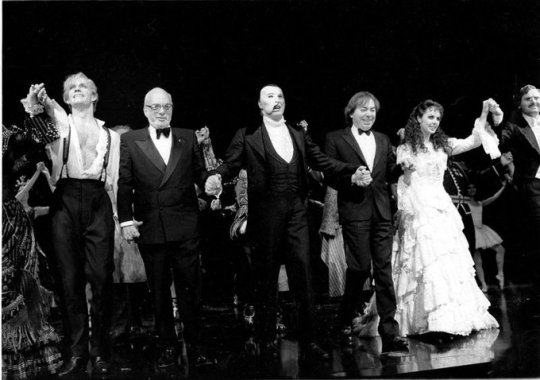
Wait, what’s the Phantom Proshot?
The Phantom Proshot is an archival copy of the original Broadway cast and production of Phantom of the Opera, filmed at the evening performance with a live audience on May 25, 1988. The New York Public Library, Theatre on Film and Tape Archive at the Performing Arts Library at Lincoln Center has archival copies of Broadway, Off-Broadway, and Regional theater going back to 1970. You can’t view currently running shows, so since Phantom ran for so long, it was under lock and key.
2. How do I see the Pro-Shot?
Pretty simple how to guide here on the NYPL website.
We are both NYPL cardholders and made a reservation in advance. You are required to state why you are accessing the recording as they exist for archival and research purpose. Both of us are published authors and researchers under our real names.

Here's a picture of the room we were in from NYPL's website. We had an appointment and were set up in a room with lots of monitors. We were seated at monitors next to each other with two sets of headphones and had one set of controls to pause/rewind etc. There are 20 monitors in the room and it was pretty full that day. This was not my first time at the TOFT and it’s always had a good number of people around.
3. Can someone get a boot of it/send me the link to it? Pleeeeease?
No. Seriously, stop asking about this. Stop joking about this. It’s not online, and never will be. All of the recordings are on digital media (videodiscs or DvDs) in the basement and only library staff get to touch them. Don’t be the person who tried to do this and ruins the archive for everyone else. You can’t even bring electronic devices into the room.
4. Why won’t they release it to the public? And who the heck does it benefit to keep this locked away?
It isn’t. It was locked away when the show was actually running. It is available to the public. We are the public! We have library cards and went to a public library and watched it for $0! It’s owned by the library so the public can see it! At the library!
The availability of us to access it now that the show has closed is what constitutes public release. There were several other phans, members of the public there to see it after us, and the library allowed them to max out the number of monitors the library allows people to view on. They had a later appointment and were watching disc one when we were on disc two. I’m sure there was someone after them too. Were we all wearing Phantom gear? Also yes.
(@or-what-you-will here) The library is not allowed to show recordings of anything currently running on Broadway, presumably because of fears about economic loss from those who own the rights to the musicals. The library does not own the rights to the musicals in the archive, and there are likely a lot of stipulations the library has to follow to be able to have recordings like this.
As someone who works in a library doing digitization work, libraries and the media they contain are very complicated. TOFT likely has the rights to show it under a very limited license, and to make copies for preservation purposes only, but things like this mean they would not be able to do anything like put it online or charge for it or do anything that would be them acting as though they owned the copyright (as opposed to the physical media). This is why when a library or archive has a book or tapes they don’t usually have the right to photocopy the entire book or digitize the entire tape and put it online (unless it is in public domain), however, if you go in person you can see it all you want. Someone else (usually the creator) owns the right to distribute or copy, and libraries and archives can get in a lot of trouble for violating it.
The copyright is still owned by the holders of each respective musical’s copyright. It’s essentially like when you buy a DVD and you are technically not supposed to copy that DVD but you can invite your friends over to watch it at your house. Copying it and distributing it violates copyright. Putting it online violates copyright. If the library violated copyright it would likely lose the ability to archive musicals altogether. If you copied the DVD it would be a lot harder to find out who put it up because the DVD is owned by lots of people, though you could still be prosecuted by the law. If the library did, they would know immediately who did it because they are presumably the only ones with a copy of this recording.
Likewise if someone took a bootleg recording of a show and distributed it, the copyright holders wouldn’t know it existed. If they found out that individual would then be eligible to be prosecuted under the law. Because the library is a public institution, if they were found out to be doing this, it would be the library itself that would get in trouble and it would damage their reputation, their funding, and quite possibly the funding and reputation of libraries around the world. A lot of this is done on trust. The copyright holders trust the library as a public institution and the library has a lot more stakes in the game than a single person recording the show and distributing it.
It’s a very tenuous agreement at times, and likely the library is only allowed to even record because there are so many protections in place and they have a history of enforcing these rules. These agreements also usually cover digitization and preservation, but again, violating them could have those abilities taken away as well. It’s all tied up in copyright law and the library has no control over that. I have talked to archivists where I live who have to record performances with tape over the lens because it’s considered for preservation and they want to make sure it cannot be possible to profit off of it in any way.
When the show goes into public domain they will be able to put it online all they want without fear of repercussions, but until then, unless those agreements change, we are all limited by the whim of the copyright holders.
5. Hello! Is the pro shot you watched what this clip is from https://www.instagram.com/reel/Cp2_80CJqI3/?igsh=MWNja2wwYWw4OHUwbw== ?
I know all of us here on Tumblr were freaking out that they maybe had a copy of the pro shot when this came out. Thank you! (@imstillhere-butallislost)
Not the proshot, it's a press reel. It has its own cool story though! Answered this here.
6. How good of a shot was it? I know you said ProShot but is it a ProShot like Hamilton or just a camera recording the whole stage at once?
I’d definitely say it was Hamilton pro-shot quality as to what was available at the time between image quality and mixing up of close ups and wide shots. I’ve watched other proshots and many just park a camera in the back of the orchestra and call it good. Cats in particular had multiple cameras but just did close-ups when they felt like it, not when it made sense or added anything. As @or-what-you-will explained in their re-blog, Phantom was one of the first proshots where they had a soundboard plug in, and let me tell you, with the exception of a few moments in Act 1 where Sarah Brightman maxes out her mic, the sound was delicious. Have we talked about how Judy Kaye is singing over the overture (yes, that’s Judy Kaye, original Carlotta, warming up!)? Or that you can hear every single word of Notes I and Prima Donna and Notes II, which usually just sounds garbled because everyone is singing over one another? Actually hearing words that I sort of know exist changed my experience of the show for me.
7. How did the tempo seem, compared to the pace of the show at the end of its run? I saw the show a few times in the last few years, and the music seemed significantly faster in person than it sounded on the London cast recording. I’ve always wondered if that was just a difference between the London and NY productions, or if the tempo just sped up over the years.
Uh…normal pace??? I’ve watched a lot of boots and most solidly clock in 2:15 of run time. This was no different. There are definitely some that run a little faster. London during Earl Carpenter’s 2023 run was notorious as he had to catch a train. It does seem to have settled back out. I will say, the music does always feel more intense in person because the whole place just vibrates.
8. I'm curious about the comment about the Ratcatcher? I think I remember that character from a film adaptation, but was he ever in the ALW musical? (@lord-valery-mimes)
Yes, Ratcatcher is still in the musical, even now. It’s a blink or you miss it type of moment. If you hear a thud and a scream right before Madame Giry tells Raoul “He lives across the Lake, Monsieur”, the thud is the ratcatcher running across the travelator.
9. Does Christine really recognize the Phantom in PONR from his boner?
No, but at this point she probably already know it’s him and has been trying to get through the scene, but definitely acts surprised because, well, that’s surprising. But it’s definitely the moment where the Vibes Are Officially Off.
10. Can Sarah Brightman act?
Yes! All three of the trio have far more nuanced performances on stage. Sarah doesn’t act the way that we do see many later Christines (including late 80s and early 90s Christines), but she absolutely created the blueprint for the role. Her “Wishing You Were Somehow Here Again” is missing some soul, but at the end of the day she was one of a kind, and she made some very strong acting choices.
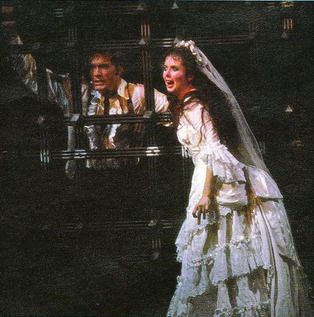
11. there anything unexpected? Any interpretation that stood out to you and particularly striking but didn’t stick around as others took on the roles and put their own spin on things?
Guys, I want to talk about Steve Barton as Raoul. The man made choice, after choice, after choice. And yet we have had so many Raoul’s that are kind of just strutting about looking pretty. Some seem to even forget they’re onstage during Final Lair. It can be such a juicy role if the actors choose to make it that way but so few do.
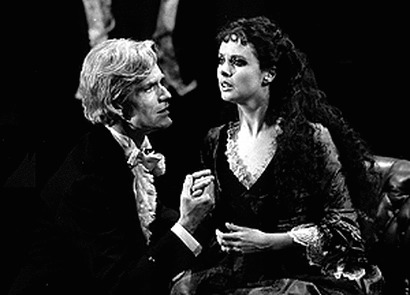
Besides some small details I mentioned, the show did maintain its integrity through its 35 year run, which is truly remarkable.
(@or-what-you-will here) Seconding what Flag said, Steve Barton brought so much more to the role than I’m used to seeing, and it really opened my mind to what Raoul could be.
The blocking in PONR did surprise me, I knew they had changed it but I hadn’t realized how much. I always found the kind of pinwheeling arm thing Christine does with the phantom strange, so it was a pleasant surprise to find that they didn’t do that at all, the embrace from behind made more sense to me.
I also found after she took his hood off no one really ran out, the phantom and Christine got to have their moment. The blocking where they (the managers and Raoul) run out and tell Christine to stay makes no sense with their motivations to stop him. The more recent blocking where Christine motions them to stay in place as the phantom sings the All I Ask of You Reprise makes way more sense with the characters’ motives and matches this original blocking much more.
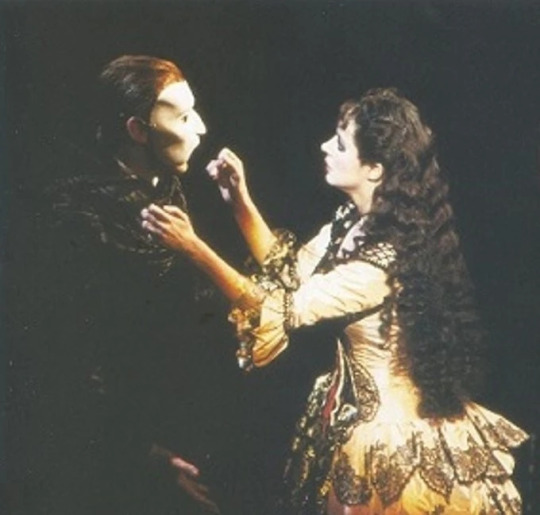
12. Also are you truly working on a research project? If so, how is progress and where might we find your final results when it’s complete?
To quote Dr. Who, “Spoilers.” Yes, always. Both of us have day jobs that have us doing research, but I can’t promise I’ll put it on here when complete since I keep fandom and real life separate. Sorry to dodge this one but getting into specifics about this starts to identify us.
(@or-what-you-will here) Seconding what Flag said.
13. Hi there, I was wondering if I could ask you a general question about the NPL’s archive. Something about the language on their website made it sound like viewers could only watch a recording “once”. I wasn’t sure if that meant “once per visit” (i.e. you can’t sit there for 8 hours restarting the tape every time it ends) or “once” as in forever (like, once you’ve watched a recording you are never allowed to request it again). Did you have any clarification? I wasn't sure if the librarians explain the policies when you arrive at your appointment. Thank you for providing so many details about the Phantom pro-shot and offering to answer our questions! That's really kind of you!
You’re welcome! So if there’s nobody after you, you can hang out with the media as long as you want. However, we did have another group come in about 90 minutes after us. That gave us enough time to watch both acts with all the rewinds we wanted. We watched PONR and parts of Final Lair like five times. On a previous TOFT trip I watched two shows and was there for like six hours. The prohibition is on coming back and watching the recording again. I have no idea how strict they are about this, although I suspect it’s to keep people from monopolizing certain media. Would I want to try to watch the proshot again in the future? Probably! I know there’s stuff I missed, or I’d see something different depending on what I’m working on. The TOFT is also an absolutely incredible resource and I have so many other shows I’d like to check out.
(Will here) They do log on your library account when you visit that you visited and what you saw. However, if you have accessibility needs that would require you to watch in multiple viewings or something along those lines, I would talk to them about it, because I’m sure they’d be able to work with you to figure out something so you wouldn’t have to sit through the whole thing in one shot.
14. > Barton Raoul’s “There is no Phantom of the Opera” comes off more as “Christine this is just some dude” vs “he doesn’t exist at all.”
Could you elaborate on this part? I'm having trouble imagining how that would be conveyed. (also, thanks for sharing your notes on the procast!) @clutzyangel
You're welcome! Yes, he's telling Christine that the Phantom is a human, flesh-and-blood man, not some fantastical creature. I've seen many Raouls who seem to try to convince Christine that the Phantom doesn't exist at all. Barton's Raoul seems to understand that he's a man with ulterior motives possibly duping Christine.
And he's not wrong.
#phantom of the opera#poto#alw phantom#phantom proshot#happy birthday phantom broadway#phantom broadway#michael crawford#sarah brightman#steve barton#judy kaye#andrew lloyd webber#nypl#research#I wish Phantom were still be on broadway#we should all be wilding out at the majestic
172 notes
·
View notes
Note
wenclair is lowkey 2024's bechloe?? imagine
wednesday: i apologize. i'm not interested. this seems very foolish
bianca: aca-scuse me? synchronised lady dancing to a Mariah Carey chart topper is not lame
enid: we sing all over the world and we compete in national championships!!! :))))
wednesday: on purpose?
bianca: we played the cobb energy performing arts center, you bitch!
enid: what bianca means to say is that we are a close-knit, talented group of ladies whose dream is to return to the national finals at lincoln center this year!! help us turn our dreams into reality?
wednesday: no.
not beca's disinterest with wednesday's classic vocabulary in her dialogue and dead eye stare LMAOO
#can yall imagine wednesday singing tho? esp the songs they did in pp? help#andy tag#wenclair#bechloe
30 notes
·
View notes
Text




The Metropolitan Opera House opened at Lincoln Center in New York City on September 16, 1966, with the world premiere of Samuel Barber's opera Antony and Cleopatra.
#Metropolitan Opera House#Lincoln Center#travel#original photography#vacation#tourist attraction#landmark#architecture#cityscape#16 September 1966#Lincoln Center for the Performing Arts#Charles H. Revson Fountain#30 Lincoln Center Plaza#Wallace Harrison#Harrison & Abramovitz Architects#Midtown Manhattan#USA#New York City#summer 2013#exterior#anniversary#US history
2 notes
·
View notes
Text


(hopefully tumblr doesn't kill the quality LOL)
an interview that ben did with brandon voss for a january 2012 edition of playbill while promoting his run in cat on a hot tin roof!
also, full interview transcribed under the cut for anyone who needs it!
Benjamin Walker: A Walk on the Dark Side
After several presidential detours, Benjamin Walker comes back to the classics in Broadway’s Cat on a Hot Tin Roof.
By Brandon Voss
He’s played presidents in the popcorn flick Abraham Lincoln: Vampire Hunter and the Broadway rock musical Bloody Bloody Andrew Jackson, but Benjamin Walker now faces one of his greatest challenges in leading a classic Tennessee Williams family drama. Walker, whose previous Broadway credits include revivals of Inherit the Wind and Les Liaisons Dangereuses, stars as tormented alcoholic Brick Pollitt opposite Tony winner Scarlett Johansson's Maggie in the latest revival of Cat on a Hot Tin Roof, which officially opens January 17 at Broadway's Richard Rodgers Theatre. The 30-year-old actor-comedian discusses the perils of onstage drinking and how he's found the funny in the dysfunction.
Playbill: You became an action star in Abraham Lincoln: Vampire Hunter, and you’ll next appear onscreen in the HBO film Muhammad Ali’s Greatest Fight. As you branch out into TV and movies, how important is it for you to stay connected to the theatre?
Benjamin Walker: I started out in the theatre, and I'm never going to not be doing theatre. I love that the best literature is in the theatre, and I love the people in the theatre. I love that the theatre community is a real community, whereas the movie business is a business. I like working in that business too, and I'm inspired by people in that field, but it's the legacy of the theatre that keeps drawing me to it.
You showed tremendous loyalty to the theatre when you turned down the role of the Beast in the film X-Men: First Class in order to transfer with Bloody Bloody Andrew Jackson from the Public Theater to Broadway.
That was a complicated decision, but it boiled down to the fact that I was going to regret not being a part of that show on Broadway. When you're lying there dying, those are the things you think about, and I didn't want that particular regret. I try to keep my regrets counted on one hand.
Realistically, that production may not have moved to Broadway without your involvement.
And those are my friends, man. We'd all grown with the show for so long. I was broke anyway, so I figured I could be broke a while longer. No big deal.
Unfortunately, Bloody Bloody Andrew Jackson closed on Broadway after only 120 performances. Any regrets there?
Absolutely not. We took that show as far as it could possibly go. For that, I could not be more proud of the cast and everyone involved. I had dinner with [composer-lyricist] Michael Friedman a few weeks ago, and he was saying that Andrew Jackson is one of the top 10 most produced shows across the country. There are, like, four productions in Texas alone. That's remarkable. That's where the show should live and probably will for a long time.
What attracted you to Cat on a Hot Tin Roof?
Our director, Rob Ashford, was one of the first guys to give me a shot. We were going to do Brigadoon together a few years ago, but it fell apart. We've since worked together on a number of things, like opening the Smith Center for the Performing Arts in Las Vegas. I adore his work. He inspires me, and I knew that I could learn a lot from him. And Scarlett's not bad either! Based on those two components alone, I'd be interested in doing the play even if it were toilet paper.
Rob Ashford is an inspired choice for this revival, which marks his directorial debut of a non-musical Broadway production. He's a director-choreographer best known for his work on shows like Evita, How to Succeed, and Throughly Modern Millie.
Well, the play's very musical. It is music. It is poetry. It is dance. A trap of the play is to let the movement be worn down slow by the Southern heat, but these people really are like a cat on a hot tin roof — screaming, bouncing, constantly jumping in pain. The need for that physicality is something Rob really understands and is brilliant at pulling out of us.
One sometimes wonders why a particular play gets revived time and time again.
Oh, yeah. It's like, "Leave it alone! They got it right last time."
What is it about Cat on a Hot Tin Roof that people continually want to revisit?
It's about something that's truly timeless and that, because of the human condition, we will struggle with until we're extinct: The need to communicate and our inability to do so. It's also about the need to express love and feel love and how difficult that is. It's about the complexities of sexuality and how that's perceived. And it's about the idea of legacy and the future. A lot of plays only exist in a certain time, and when you watch them you're looking back on that time as if you're going to the Museum of Natural History. But when you read this play, the play's written so well that the poetry of the writing illuminates something about your own time. It's not a pageant of another era. It sheds a new light on your own issues with love and family.
What do you think separates this revival of Cat on a Hot Tin Roof from others before it?
We're certainly bringing a sexuality and a vitality to the play in a way that I don't think has been done before. We're approaching it in a way that there's real potential for calamity. It's going to be a mess in the way that real life is. These people say what they mean and mean what they say with all their heart, so it's very passionate in the Shakespearean sense. There's nothing casual or lackadaisically Southern about it. These people could pop at any second. But I don't really find it productive to compare productions. I find that dangerous. It's been a long time since I've seen the 1958 movie, and I didn't see the Ashley Judd version on Broadway in 2003, so I don't really know what's different about our production. You'll have to tell me after you've seen it.
Did you not see the 2008 African-American revival with Terrence Howard either?
No, I didn't. I wish I had seen that.
Tell me something interesting that you discovered about Brick during the rehearsal process.
There are definitely some traps for Brick, particularly in the early few pages of the play when he doesn't say very much and he's drinking a lot. So much of his life is about trying to avoid issues, avoid feelings, avoid memories. That can be a trap for an actor, because you're not engaged with anyone, so it comes off as blasé, one-note and boring. It's like watching a boiling pot: You don't know what's going on inside if there's a lid on it, but if you know that it's boiling, you know it can blow at any second. Visually, both pots are almost the same, so you have to have that internal turmoil.
Much of your audience will likely be familiar with Cat on a Hot Tin Roof from the film or from recent revivals. The great Paul Newman famously played Brick onscreen. Do audience preconceptions put any additional pressure on you?
Nah. Screw ‘em. [Laughs] I don’t understand how that's helpful to anybody. Those expectations certainly aren't helpful for the audience. If you're expecting something, looking forward to something, you're going to miss something. It seems detrimental to your experience, and it's also detrimental to our work. But I don't think as many people do that as we think. At least I hope not.
You married actress Mamie Gummer last year. Are you drawing on the new marriage, with all its ups and downs, to enrich Brick and Maggie's relationship?
Luckily, my wife and I don't have that much in common with Maggie and Brick. [Laughs] But yeah, I draw from every relationship. And Scarlett also brings so much from her own life that really creates a lovely chemistry.
Although she's primarily a film actress, Johansson won a Tony for her Broadway debut in the 2010 revival of A View From a Bridge. What’s it been like to work with her?
Oh, she's great. She's classy, she's well prepared, and she's well suited for the part. She's the whole package and the real deal for sure.
What's the greatest challenge in playing your iconic role?
Finding a pee break. I have to keep drinking, refilling my glass, and I'm onstage the whole time! I might need to hide a spittoon in the corner. Other than that, where to begin? Tennessee Williams is the best, but he's certainly the most challenging writer that I've worked on in a long time.
As far as Brick's heavy drinking goes, how method have you been in your research?
Oh, my research on that has been well done for years. I'm typecast, if nothing else.
Brick is leaning hard on the bottle following the suicide of his close friend Skipper, who had confessed his romantic feelings for Brick. There has also been much debate about Brick's sexuality. Do you see him as gay?
Oh, I can't tell you that.
Is that mystery important for the audience?
It's a strength of the play that it talks about something bigger than that question. If you're asking that question on the way out, either I've done my job really well or I haven't done my job at all — I don't know. Human connection is so much bigger than the categories we like to put it in, which almost ruins it. But I can already hear my mom — "So was he gay?"
I assume that you know Brick's sexuality one way or the other when you step onto that stage.
Of course. I can't show up if I don't know that. I can't say Tennessee Williams' words if I haven't done that work. That would be a lazy actor right there. [Laughs] Yeah, maybe I'll just figure it out as I go. Maybe Brick's really in love with Big Mama!
You're also a stand-up comic and host of a variety series called Find the Funny. Are you finding the humor in Cat on a Hot Tin Roof?
The more time I spend with my comedian friends, the more I realize that truly funny people are ones with a really deep inner darkness. Brick is definitely stewing over some painful stuff, and oftentimes people can only release that through humor, sarcasm, or being cutting in a way that causes nervous laughter. Tennessee Williams is a funny writer in the same way as Chekhov; if the audience isn't laughing, you've probably missed the point. There's a fine line between drama and comedy that we walk, and life is like that too.
Some theatregoers may compare your performance as Brick with your performance as Andrew Jackson. It's easy to dismiss those characters as having nothing in common, but have you noticed any similarities?
Yeah, actually. They're both very conflicted men at crossroads in their lives, and they have to make huge decisions that will affect the legacy of their families. Of course, the shows are very different. When a cell phone rang during Andrew Jackson, I could just yell, "Shut off your phone, you prick!" I have to get out of that habit.
You were born and raised in Georgia. Did that come in handy when working on your Southern accent for Brick?
My Southern accent's a little different than Brick's. The Pollitts are very high class and old money, but my accent is more country than Scarlett O'Hara. Working with the wonderful Deborah Hecht as our dialect coach, we actually looked at politicians like Jimmy Carter — people who needed this grandness to their language but also had a Southern thing going.
You seem to have lost your Southern accent altogether.
I have to fight it. They beat it out of me at Juilliard. My accent only comes out if I get angry, have a couple drinks, or talk to my mother on the phone. Then you can't understand a word I say.
#benjamin walker#content - old#cat on a hot tin roof#brandon voss#playbill#brick pollitt#bloody bloody andrew jackson#bbaj
17 notes
·
View notes
Text
Isabella LaFreniere

Isabella LaFreniere, “Everywhere We Go”, music by Sufjan Stevens, choreo by Justin Peck, costume by Janie Taylor. As part of the program “All Peck” (“In Creases”, “Solo”, “Partita” and “Everywhere We Go”), New York City Ballet, David H. Koch Theater, Lincoln Center for the Performing Arts, New York City, USA.
Source and more info at: New York City Ballet Website New York City Ballet on TikTok New York City Ballet on Twitter New York City Ballet on You Tube New York City Ballet on Facebook New York City Ballet on Instagram
Photographer Erin Baiano Website Photographer Erin Baiano on Tumblr Photographer Erin Baiano on Instagram
Note I: This blog is open to receiving and considering any suggestions, contributions, and/or criticisms that may help correct mistakes or improve its content. Comments are available to any visitor.
Note II: Original quality of photographs might be affected by compression algorithm of the website where they are hosted.
#All Peck#David H. Koch Theater#Erin Baiano#Everywhere We Go#Isabella LaFreniere#Janie Taylor#Justin Peck#Lincoln Center for the Performing Arts#New York City Ballet#Sufjan Stevens#Dans#Dansen#Danser#Danza#Dance#Danse#Dancer#Балет#Ballet#Balet#Balletto#Ballett#Ballerina#Ballerino#Balerino#Balerina#Bailarina#Tänzer#Танец#Танцор
0 notes
Text
Balanchine's Coppelia
In today's Times, Roslyn Sulcas has an article about the New York City Ballet's production of Coppelia, which celebrated its 50th anniversary this summer. It had its premiere at the Saratoga Performing Arts Center during the company's annual residency.
One thing that Sulcas fails to mention is that the role of Swanilda was originally supposed to have been shared by Patricia McBride and Gelsey Kirkland. But when Kirkland announced she was leaving the company, Balanchine gave all performances to McBride
‘Coppelia’ at 50: When City Ballet Took a Turn for ‘Fun and Funny’
Original cast members look back at George Balanchine and Alexandra Danilova’s staging of the 19th-century ballet. “Everyone knows when something is good,” one said.
By Roslyn Sulcas Sept. 23, 2024, 5:02 a.m. ET
George Balanchine’s decision to stage the 19th-century ballet “Coppelia,” in 1974, was a surprise. Although Balanchine, the co-founder and leader of New York City Ballet, occasionally created narrative ballets, like “The Nutcracker” and “A Midsummer Night’s Dream,” the company was identified with a lean, no-frills approach to classical dance. It was turned toward innovation and experimentation, rather than story, characters and elaborate costumes.
But the three-act “Coppelia,” with its lush, melodic Delibes score, fairy-tale set and extensive ensemble dances, was anything but experimental. City Ballet audiences were anticipating it “with a mixture of delight, incredulity and awe, and in some cases horror,” the critic Marcia B. Siegel wrote, shortly before the ballet’s July 17 premiere at the Saratoga Performing Arts Center in upstate New York. But Balanchine, who asked his Russian compatriot (and former romantic partner), the ballerina Alexandra Danilova, to assist him on staging the ballet, knew what he was doing. “Coppelia,” starring Patricia McBride as the heroine Swanilda, Helgi Tomasson as her swain Franz and Shaun O’Brien as the eccentric toymaker Doctor Coppelius, was a roaring success, and has been performed regularly ever since. This season’s performances—Sept. 27 to 29 and Oct. 5-6—are City Ballet’s 50th anniversary celebration of the ballet.

Above: Patricia McBride rehearsing Coppelia, 1974. Seated at left are Susan Hendl, who led the Waltz of the Golden Hours in Act 3 and Stephanie Saland, McBride's understudy, who also performed Swanilda. Standing, center: Lincoln Kirstein, Patricia McBride, George Balanchine. Leaning against the piano at right is Rosemary Dunleavy, the ballet mistress. Seated at right are Colleen Neary, who led the Discord & War divertissement in the third act, and Merrill Ashley, who danced the Dawn solo in the same act. Photo: Martha Swope via NYPL/NY Times
“Coppelia” was first choreographed by Arthur Saint-Léon for the Paris Opera Ballet in 1870, and then reworked by Marius Petipa in 1884 into the version we know today. The story is simple: Franz and Swanilda are happily affianced village sweethearts, until Franz falls for a pretty girl who turns out to be a life-size doll—the creation of Doctor Coppelius. By the end of the tale, which involves Swanilda impersonating the doll, Franz has learned a lesson about fantasy and Swanilda has secured her man. Cue wedding celebrations.
Balanchine asked Danilova, a famous Swanilda with a pitch-perfect memory of the Petipa version she had performed with the Ballets Russes de Monte Carlo, to set Acts I and II, although he added a few new dances. But Act III, omitted in many productions, is his alone, a series of divertissements that are a pure-dance coda to the story.
Megan Fairchild, who first performed Swanilda at 19, said she loved the character’s sassy personality. “It’s a more casual vibe,” she said. “She’s not a princess, and that resonates.”
“We do a lot of ballets that are sophisticated and intellectual, for highly developed dance watchers,” said Wendy Whelan, City Ballet’s associate artistic director. “This is lighthearted and warm and easy to watch. It’s a reminder of the beginnings of ballet: the storytelling, the classical dance, the pantomime.” Plus, Whelan added, “it’s fun and it’s funny.” In interviews, five original cast members talked about their memories of creating the ballet. Below are edited excerpts.

Above: Patricia McBride in Act I, 1975. Swanilda's friends in the background are Judith Fugate, unidentified, Delia Peters, and Debra Austin. Photo: Martha Swope via NYPL
Patricia McBride, Swanilda Madame Danilova’s memory was uncanny. She remembered every step for every character in the ballet, and she danced full out when she showed you the choreography. She wanted me to play it straight when I impersonated the doll, not for laughs, and she was very precise about the musicality and phrasing, and the intent of each step. We hadn’t done a lot of mime at City Ballet, but she was so clear, she made it easy to learn. I loved that beautiful Russian port de bras she had. You could see what a great Swanilda she had been.
Balanchine was very specific about the way I held my arms and body as the doll. He never spoke about characterization, or how he wanted it to look, but the musicality of the choreography was so natural and wonderful. He would show you the steps and it was done.
Madame Danilova and Balanchine would keep going all day long, moving from one scene to the next, talking together. It was like seeing history, the two of them in the room together. Mr. B never interfered with her staging. I think he really respected her knowledge and memory.
Sometimes I would feel quite choked up to think of their lives and history together. They were both in their 70s, but they had so much energy and vitality and love, and they had a lot of fun together. They were so young in spirit. I felt so fortunate to work with them, and to see their respect for each other and their love of dance.

Above: Helgi Tomasson in Act 3, Saratoga, 1974. Photo: Martha Swope via NYPL
Helgi Tomasson, Franz I was surprised and not surprised at Balanchine deciding to do “Coppelia.” He spoke about programming like creating a menu; he knew that he had to give the public varied dishes. And I think he loved those old Petipa pieces.
We were up in Saratoga when he started to choreograph my first-act variation. For some reason, he didn’t feel it was right. John Taras, the ballet master, was sitting next to him, and asked if I knew Balanchine’s “Sylvia” pas de deux, also to Delibes music. I had danced it with the Harkness Ballet, and Balanchine said, “Do you remember the variation? Let’s see it.” I did it, and he said, “Good, let’s keep that!”
For me, most of the dancing was in the third act. I loved the way Balanchine constructed the coda and how Patty and I came in and out of the group. He created speedy yet articulate steps that I think he felt suited me.
I remember that Patty and I did every performance of “Coppelia” in the first week, seven or eight in a row. At some point during that first week, I was so tired that in the scene where Franz is supposed to be asleep, I actually fell asleep. But the whole experience was a highlight of my career.

Above: Alexandra Danilova rehearsing Patricia McBride. Photo: Martha Swope via NYPL
Jean-Pierre Frohlich, Corps de Ballet I had been in the company two years and was just 19. I remember so well Balanchine and Danilova standing in front of the mirrors at the front of the studio. She was so elegant. I knew they had been an item in the Diaghilev era, and I was trying to see how those dynamics would have worked! You could see she still adored him.
Danilova loved to demonstrate steps. She wore ballet slippers with a little heel and ribbons. She had beautiful legs, and liked showing them off. She loved men; she was harder on the women than the men.
There was a very good ambience in the studio. They spoke in English, maybe occasionally in Russian, but I think they wanted the dancers to understand. She would never contradict him or say no to his suggestions. I felt she was very happy to be involved. But he was also very accommodating; he knew how much she had to offer.

Above: Gelsey Kirkland, originally scheduled to share the role of Swanilda with McBride, at rehearsal with ballet mistress Rosemary Dunleavy. Photo: Martha Swope via NYPL
Christine Redpath, Prayer Solo Madame Danilova was so charming. She would wear a gorgeous green sleeveless leotard, with a scoop neck and back, a belt and chiffon skirt, hiked up to show her fantastic legs, and her hair coifed with a little scarf tied behind her ears. You could see she still loved to dance, and it was very sweet to see she still loved Balanchine.
[In “Coppelia,” three allegorical female solos, Prayer, Dawn and Spinner, come near the start of Act III. ]
I learned my solo with Balanchine, but Madame Danilova was there because she had danced the Prayer solo in Russia. I think what he created on me was based on that. Balanchine never spoke about the meaning of the solo, but all the gestures are “up,” and the music seems spiritual to me. If you take what he has given you, it’s all there to tell you who you are and what this is.
At some point he showed me a picture of Marie Taglioni in a blue skirt and little top with puffed sleeves and a horseshoe crown with stars, and that’s what Karinska designed for my costume.
Danilova sent me a lovely card and flowers on the opening night. We were all very excited. Everyone knows when something is good.

Above: Merrill Ashley in the "Dawn" variation in Act 3. The costumes are the originals; they were replaced when the ballet was performed in New York the following year. Photo: Martha Swope via NYPL
Merrill Ashley, Dawn Solo The solo he made for me was fiendishly difficult, and it never became easier. There was fast footwork, lots of changes of direction and it ended in plié on pointe on one foot. I liked dancing it, but it scared me. There was one bit on a diagonal that was impossible, and it repeated three times. Eventually I said, I’m really struggling, would you consider changing it, and he said, “Dear, it’s yours, do what you want.”
Danilova choreographed the introduction to the solo, and that had more of a feeling of gentleness, awakening, offering something. Then the sun comes up over the horizon and, boom! Pyrotechnics!
You felt that Balanchine and Danilova were really friends and colleagues. He turned to her a lot; he really respected the knowledge and tradition she brought. I loved watching their interaction.

Above: Children from the School of American Ballet in Coppelia. The pink costumes replaced the golden ones used in Saratoga. Photo: Martha Swope via NYPL
Charlotte d’Amboise, Child Dancer David Richardson, a dancer in the company, was in charge of the kids, and to my twin sister and me he was God. We knew Balanchine was famous, but it was all about David. I was in the big dance in the last act, which I loved. We wore pink tutus and it was really dancey, and we had a whole section that was just us.
Balanchine really loved to have children involved and he could choreograph for them. He did it so easily, almost as if he didn’t think about it, just “go here, do this.” But he must have planned it.
At the first performance in Saratoga, one side of the elastic on my ballet slippers came off and was dangling while I was dancing. All I remember is thinking, David is seeing this—and he was so mad at me. I have never not paid attention to my shoes again!
I did pretty much all of the Balanchine ballets that had children in them, but “Coppelia” was my favorite. You felt like a ballerina, you had to have technique to dance it, and you felt like you were part of the corps de ballet. The best part of being a kid in these ballets was dancing next to these ballerinas and dancers who are goddesses and princes. To be surrounded by high art, to be part of it, affects you forever.
#Balanchine#Coppelia#Balanchine's Coppelia#Alexandra Danilova#Patricia McBride#Helgi Tomasson#Merrill Ashley#Christine Redpath#Jean-Pierre Frolich#Charlotte d'Amboise#Gelsey Kirkland#Saratoga Performing Arts Center#SPAC
10 notes
·
View notes